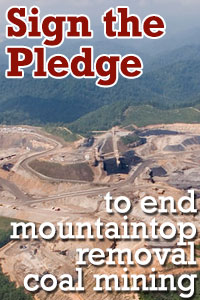Communities, Welcome to Buffalo Mountain, West Virginia
Buffalo Creek: No two words carry more drama and pain in the coalfields.
Friday, October 19th, 2007
Buffalo Creek: No two words carry more drama and pain in the coalfields. They symbolize all the dangers of surface mining. They speak of the callous attitude the mine operators sometimes show towards those who live nearby. On February 26, 1972, a dam constructed of coal waste broke loose near the head of Buffalo Creek. The poorly constructed dam was holding back a lake of water used for cleaning coal. The lake was perched between two hills. Hundreds of thousands of gallons of toxic, black water rushed down the valley like a tidal wave. The death toll totaled 125. Hundreds of homes were swept away.
Now residents of the coalfields use “Buffalo Creek” to express their fears of possible floods from the ponds at the ends of valley fills. Others fear a collapse of similar dams made of coal waste that hold back large ponds of discarded coal sludge in places like Laurel Creek, Ragland and Lick Creek. Part of the federal Surface Mining Control and Reclamation Act was enacted as a response to Buffalo Creek. The federal and state laws are supposed to prevent any more deadly floods. So far, no dams such as the one at Buffalo Creek have broken. However, more and more coalfield residents believe that the valley fills are exacerbating floods.
For more information about sludge impoundments, visit www.sludgesafety.org
Click here to take a Google Earth tour of more than 330 coal sludge impoundments in the coal bearing regions of Appalachia. A kml file will automatically download and open in your “Temporary Places”
Story contributed by distinguished author Penny Loeb from her website www.wvcoalfield.com. Photo by Kent Kessinger provided courtesy of Appalachian Voices and Southwings.









